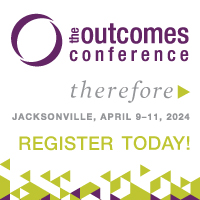
Part 2: The Path to Organizational Health By Al Lopus
As I discussed in Part I of The Path to Organizational Health, our research at Best Christian Workplaces Institute validates four steps in “The 4-D” cycle an organization can take to move towards organizational health.
Those steps include:
- Discovery (appreciating and valuing)
- Dream (envisioning)
- Design (co-constructing the future)
- Destiny (learning and empowering to sustain the future)
Today, I cover how design and destiny fit into the cycle.
Design
Once the strategic focus of a better world is identified in the Dream phase, we begin designing the ideal culture. Through designing new, healthy elements of change, healing from past hurts and rebuilding trust can occur.
1. Identify specific design elements. This step defines the structure to allow the dream to become reality. Design elements could include leadership development, systems, strategy, technology, shared values, decision-making, performance management, and goal setting. The organization is now working to begin implementing positive change. Moving quickly is important to continue the positive momentum created through the Dream phase.
2. Identify internal and external participants. Creating cross-functional teams within the organization is important in the Design phase. In faith-based organizations, there is often a tendency to exclude outside stakeholders, those you serve or your donor community designing improvements. However, incorporating their input in the process is critical to the long-term effectiveness of the project.
3. Identify themes that impact organizational health and engage dialogue. Looking back at the results of the Discovery and Dream phases, identify the statements and/or stories that exemplify the desired health of the organization.
4. Write statements that define the preferred culture. Next, each team member should work independently to write preferred possibility statements about the key elements of the desired culture. To get buy-in from the entire organization, everyone must contribute. These statements bridge the “what is” to the “what might be.”
Destiny
This phase is also known as delivery or deployment. The goal is the realization of the dream. This requires aligning the organization with the statements of the preferred culture and building competencies that will sustain it.
Now you have the blueprint to move your organizational culture to the point where it is healthy and sustainable, one of the best, most effective workplaces. We have been created to reflect His image. Let’s be bold for Christ and conduct ourselves in a manner worthy of the gospel.
It’s a big question, but how does an organization effectively reflect the character of Christ?
##
Al Lopus is president and co-founder of the Best Christian Workplaces Institute (BCWI)—excerpt from Outcomes Magazine Summer 2011.

What is Christian Leadership Alliance?
Christian Leadership Alliance equips and unites leaders to transform the world for Christ. We are the leaders of Christ-centered organizations who are dedicated to faithful stewardship for greater kingdom impact.
Sign up for FREE blog updates.
Upcoming Events
Check back later!



